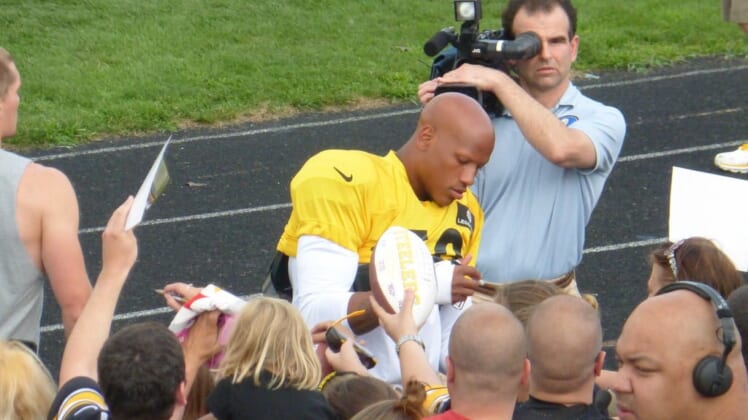
Every football season without fail, you hear about players getting serious injuries during an aggressive game. Hampering brain concussions are a normal occurrence even during practice. But you don’t hear about spinal concussions too often, despite the fact that football players have a greater risk for them. Right now, fans everywhere are holding their breath for Steelers linebacker Ryan Shazier, who is suffering from one of these scary concussions.
During a recent game, Shazier was playing hard as usual when he went in for a tackle and didn’t come up. From the audience’s viewpoint, Shazier was unable to move his legs and was pointing to his back.
The player managed to turn himself over, and officials rushed him off to the hospital. Though Shazier and those close to him have stayed relatively quiet about injury updates, the Steelers’ team doctors did make a statement recently:
“Last night, UPMC neurosurgeons and Pittsburgh Steelers team physicians Drs. David Okonkwo and Joseph Maroon performed spinal stabilization surgery on Ryan Shazier to address his injury.”
What does that surgery mean exactly? It’s likely that the doctors needed to take pressure off Shazier’s spinal cord, possibly due to swelling or fluid build-up.
Stabilizing the spine also often means a bone graft or screws or plates to set the spine. So far, the world is still waiting to hear further news of Shazier’s future.
What It Is
While not all Shazier’s fans know much about spinal concussions, you can certainly understand the seriousness of the situation. Any injury to the spinal cord could have huge consequences. Thankfully, spinal concussions are one of the more mild injuries you can suffer to that nerve control center, and many people who have them gain a full recovery.
Much like a brain concussion, a spinal cord concussion happens when too much force is applied to the spine. Usually, they occur in football games when a player’s neck gets compressed or bent forcefully too far forward or backward.
Because of the nature of the injury, players on the defensive side tend to get them more often, as in Shazier’s case. Then, when the injury happens, the player will usually lose movement and some or all of his sensation.
Usual symptoms include an inability to move the hands or feet, numbness, burning, tingling, weakness or paralysis. While serious and scary, these symptoms will resolve within 24 to 72 hours if they are true signs of a spinal concussion.
Youth Football: Is Keeping Your Kid’s Head in the Game Safe?
Little Research
Once the symptoms go away, a player’s doctor can clear him to return to football again. However, according to one 2016 review, there are no set guidelines for how a doctor goes about clearing patients.
In fact, researchers have conducted few (if any) clinical trials, leaving the long-term effects of the injury poorly understood. Much of the current research have been reviews, animal-based trials or documented individual cases. This lack of research may be largely attributed to its randomized occurrence and specific subject groups, but researchers still need to do more.
Because of the lack of research, doctors will vary on how to clear a player, but all take this type of injury seriously. The player may need to pass neurological tests and show no physical signs of injury.
Still, how many players ignore or fail to mention some of the warning signs just to get back on the field? That’s a question every injured player has to answer for himself.
Dangers of a Spinal Cord Concussion
If you stay true to the basic idea of a spinal cord concussion, the injury itself won’t have lasting consequences. A player can rest and recuperate and then get back in the game once the spine has healed.
What people fear is an injury that looks like a spinal concussion but leaves lasting consequences. In this case, the player has actually experienced something far worse.
Some possible outcomes include
- swelling
- fluid build-up
- decreased circulation
- muscle spasticity
- complete or incomplete loss of movement in the upper or lower body
- bruise or fracture of the spinal column
- damage to nerve fibers
Obviously, a fractured spinal column would likely lead to paralysis, a worst-case scenario. The swelling and fluid may need surgical intervention if they cause too much added pressure on the injured spine. Even if the player is cleared, damaged nerve fibers might make him more susceptible to re-injury.
In any case, only time will tell for Shazier and other players who receive a spinal cord concussion. In the meantime, the spinal injury should raise enough awareness, reminding players to keep their safety in mind when hunkering head-first in a game.
Spinal injuries are definitely a concern in sports. While people do experience them because of car accidents or other means, sports injuries are one of the most preventable causes. Thankfully, a spinal cord concussion is a relatively mild spinal injury, allowing many players to get back in the game shortly after. At the same time, football players like Shazier need to exercise precaution when they’re playing——and look after their own head before metaphorically tackling someone else’s.
[bc_video video_id=”5688422266001″ account_id=”5374160583001″ player_id=”default”]
